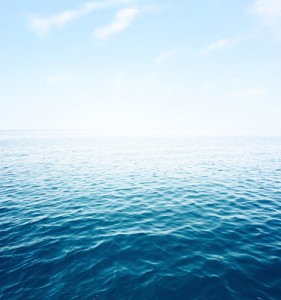Could Deep-Sea Mining Be Canada’s Next Gold Rush?
 Could Deep-Sea Mining Be Canada’s Next Gold Rush?
Could Deep-Sea Mining Be Canada’s Next Gold Rush?
Traditionally, mining has been a prolific source of income for Canada and other countries throughout the world. With land-based deposits becoming increasingly scarce, mining companies have had to seek out other sources that could be mined, including ocean floors. Vastly covering two-thirds of the Earth’s surface, oceans have been largely unexplored until now. However, the ocean floors are known to possess abundant mineral resources.
This is exciting news for the mining industry in Canada. With the longest coastline in the world and access to three different oceans, Canada has great potential for deep-sea mining resources. So much that we need to ask, will deep-sea mining be Canada’s next gold rush?
The Ocean is a Rich Source of Minerals
The ocean floor is covered in aqueous vents, which are geothermal fissures that cut deeply into the earth’s crust. These vents spew minerals from deep inside the Earth into the ocean that settle in rock deposits known as massive seafloor sulfides.
Massive seafloor sulfides consist of coveted rare earth metals, including copper and platinum. These deposits are of high quality because they are newer than dry-land deposits and have not had a chance to degrade or disperse. Many of the dwindling copper deposits on dry land feature copper with a 0.6 grade, while deep-sea copper deposits have been shown to be as high as 7.2.
Deep-Sea Mining Methods Differ from Traditional Methods
Deep-sea mineral deposits cannot be extracted through traditional mining methods. Many of these deposits are found at depths that make manual extraction impossible. Moreover, because these mineral deposits are located underwater, most established mining methods would not apply.
In order to bring these minerals to the ocean’s surface, mining companies are developing remotely operated robots to do the work for them. These robots are connected to ships floating above the mineral deposits that are used to operate the machines and collect the minerals that are extracted. Much of this technology is still in the early stages of development, but it appears to show promise.
Worries of Possible Environmental Impact
Many critics have warned of the potential environmental impacts of deep-sea mining. Little is known about the complex ecosystems located on the seafloor and scientists worry that deep-sea mining operations could cause irreversible damage.
Proponents of deep-sea mining argue that it could actually be more environmentally friendly than surface mining. Surface mining has had a significant negative impact on the environment by causing polluted waterways, devastated habitats and displaced communities.
Deep-sea mining does not require companies to drill into the Earth’s surface. As a result, it does not produce the same waste that surface mining does and there is less disruption to surrounding ecosystems. Additionally, human communities are not displaced, as the mineral deposits are not located in habitable areas.
What Deep-Sea Mining Means for Canada
Canadian companies are leading the charge in developing deep-sea mining technology. Toronto-based Nautilus Minerals is the first company in the world to be granted a deep-sea mining lease in 2014. This 20-year lease is located 30 kilometers off the coast of Papua New Guinea on a site known as Solwara 1. Nautilus plans to start operations within the next five years.
Though other deep-sea projects are in development in Europe, Nautilus Minerals’ Solwara 1 operation is set to become the first active deep-sea mining site in the world. With Canadian companies on the cutting edge of deep-sea mining, Canada is poised to be a leader in this exciting new industry.

